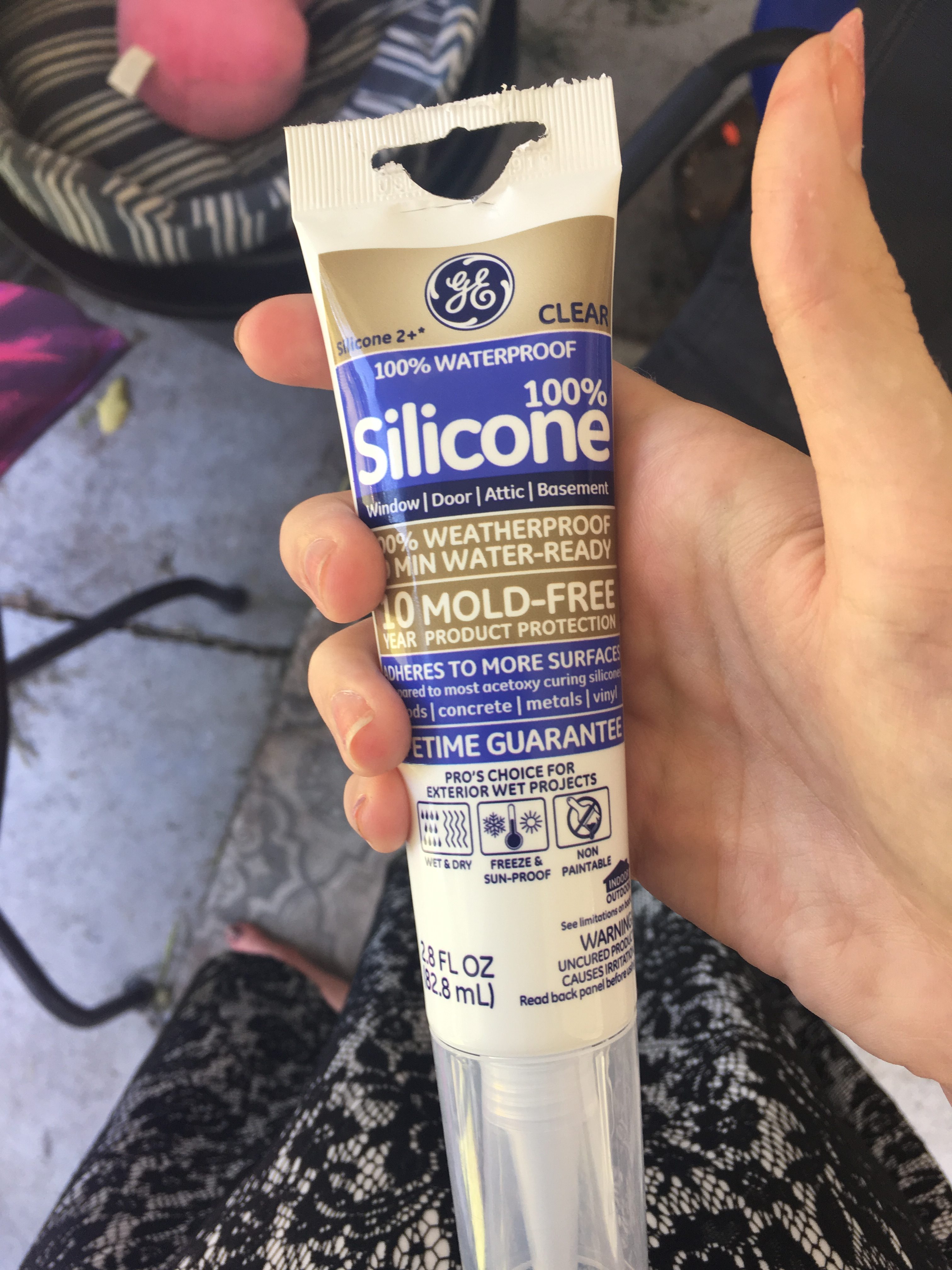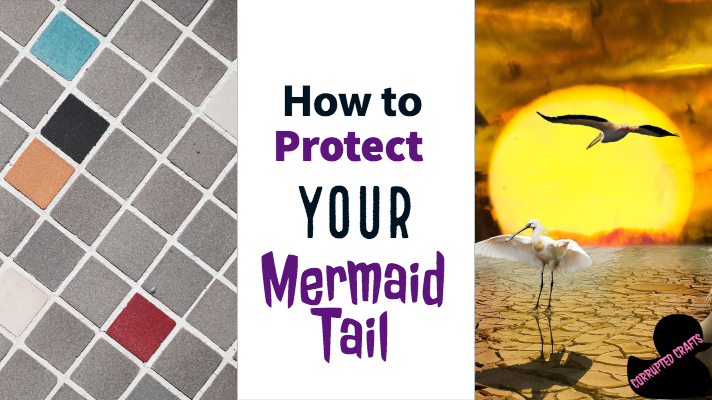Mermaid tails are expensive, even the fabric tail and monofin sets range from 100-200 dollars. Here is a few easy and cheap ways to protect your fabric tail.
You will need:
- Press and seal or cling wrap
- Mermaid tail out of fabric
- Monofin
- This exact Silicone Glue in clear
- Flex Seal for the Test
- Swatch of Swimwear, preferably an old bathing suit
- Neoprene tail tips
Precautionary Measures
Remember that your mermaid tail is only made of fabric and must be treated the same as a bathing suit, minus the wash ability. Be careful not to scrape the sides or bottoms of pools, and keep a diluted mixture of vinegar—about ¼ vinegar and ¾ water—and always spray your tail down well after swimming in chlorine. This will protect your tail from the chlorine damage and will dry with no funky smells. Always swim with neoprene covers on your monofin tips, this will keep the monofin from ripping through the fluke fabric.
Where is Safe to Swim
The best place to swim is in a pool with few people and in springs, where there is little for your tail to be harmed by. Rainbow Springs or Buccaneer Bay are both great places to take your tail for a swim in Florida. Alexander springs is also mermaid friendly.
Swimming Safety
Remember to never run anywhere near the water or on the pavement. Slipping and falling is extremely dangerous by any place with water. Make sure you are a strong swimmer before you start swimming with a monofin and mermaid tail, as just leaping into the water in a tail can make your chances of sinking even worse. Even a strong swimmer can be caught off guard and be pulled under by a wrong move, so make sure you know how to get completely out of your tail very quickly in case of an emergency.
Silicone

Silicone glue is a wonderful thing for those of us who are clumsy and new to mermaiding. Silicone is very strong and durable, as well as flexible.
Wrapping the Monofin

Before any project is started on any scrap fabrics, wrap your tail completely in press and seal. After your fluke is completely covered in the plastic wrap, pull the fabric back over the monofin carefully. For this do not use the Neoprene tips, just make sure to re-add them once you apply the glue.
Testing
Next, cut out two pieces of swimsuit fabric for testing. I started off spraying one sample with Flex Seal, thinking it would flex as the can and title suggested, while also adhering and stretching well. I was wrong. Instead, what I got was basically a useless and tough piece of fabric that was very unforgiving and lost all stretchiness. This displeased me, so I proceeded to open a tube of Silicone glue and apply it all over the second piece of fabric. Once dried, the silicone had no scent unlike Flex Seal and also allowed the fabric to stretch almost normally. I determined it would work best on fabric that was already stretched on the monofin, and thus I proceeded to add this to my tail.
Protecting the Table and Tail
Working with Silicone can very quickly turn into a sticky mess. Work outside with it and on a table covered in newspaper for the best results. Keep paper bowls handy to prop the mermaid tail on while it dries. The tail can be moved inside in about an hour, once it is dry to the touch and scent free.
Adding Silicone

The main areas of the mermaid tail that can be damaged are the landing area or the part of the monofin you stand on, the sides of the fluke, and the tips of the fluke. Using about two tubes of silicone glue, apply a lot to all of these spots, coating the tips very well as well as the landing area. The sides are a precautionary measure in case you bump into the side of the pool. Be careful not to add too much though, as the silicone should mostly be invisible in the water.
Drying
Allow the glue to cure for about 24-48 hours. Do not try to swim with the tail until this is fully cured, the cling wrap is removed, and the Neoprene is back on the tail. Never swim without the neoprene tips.
Durability

Silicone is very durable and should significantly increase the life of your mermaid tail. Remember it is important to take care of your tail if you want it to last long. A well taken care of tail can last four or five years. Good luck and happy mermaiding!

